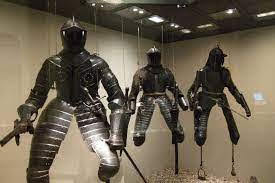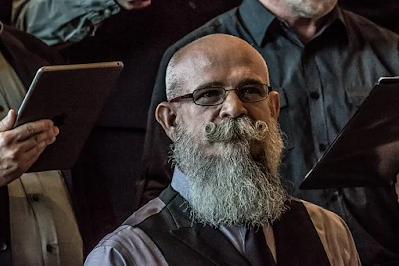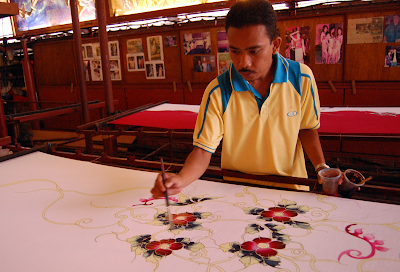Featured
- Get link
- X
- Other Apps
ARMOR
Body armor has a direct link to costuming since it accommodates and encloses the human form.
Armor has been fashioned from a variety of natural and man-made materials throughout the ages and in civilizations all around the globe.
Armor was an useful protection throughout the Middle Ages and Renaissance, and it evolved into one of the most ornate and complicated physical adornments.
It identified and camouflaged its bearer while also making a strong statement about personal style.
Skins and hides were perhaps the oldest forms of additional protection for humans.
However, the oldest purpose-built defenses were a form of belly plate constructed initially of organic material and subsequently in bronze or metal-reinforced cloth, which were found in Europe and Western Asia.
Metal headgear and a metal-reinforced cloak were used by the Sumerians.
Textile covers with applied, overlapping metal scales first emerged about 2000 B.C.E. and were used sometimes until the seventeenth century.
Lamellar armor was a comparable kind of protection.
This is said to have originally emerged in the ninth century B.C.E.
Assyrians used a kind of undergarment made out of interconnecting plaques or hoops.
Metal lor ica segmentata of Roman legionaries, as well as lacquered leather armor of Japanese samurai, are examples.
Emperor Qin Shih Huang's (221–210 B.C.E.) terra-cotta tomb figures demonstrate China's use of lamellar armor for various troops identified by rank via color-coding and tassels.
Layered linen body armor was used by Mycenaean soldiers during the Trojan War and Greek hoplite troops against the Persians.
Bronze cuirasses (torso armor) engraved with musculature were also used by the Greeks and the people of the Italian peninsula.
All sorts were worn over an undergarment that looked like it came from a historical masculine costume. Mail was also used in ancient times.
This network of riveted metal rings, most likely a Celtic invention from the fifth or sixth centuries B.C.E., expanded across Europe and into the East, and was extensively employed by the Romans and their allies.
Mail's popularity grew steadily in Europe, especially after the fall of the Roman military system in the fifth century C.E., and among those who witnessed invading Hunnish cavalry using it.
Armor In The Middle Ages
Until the thirteenth century, mail, derived from the French maille, or "mesh," was the most popular metal armor in Europe.
Mail shirts with long sleeves and mittens, worn over a thickly padded undergarment, or aketon, ultimately covered the thighs and developed long sleeves with mittens.
The protection was completed with mail hoods (coifs), leggings, and a conical helmet or a barrel-shaped helm that covered everything except the eyes.
A long, wooden shield was carried as added protection against strong weapons.
Such soldiers were costly to maintain and had vast riches, which they derived from territories granted to them in exchange for military service.
As a result, these armored soldiers were popularized as horse-mounted knights, and the terms "knight" and "horseman" are interchangeable in many European languages.
A system of symbols known as heraldry was used to identify each fighter.
The "coat of arms" of a knight might be seen on his shield and, beginning in the eleventh century, on a gown-like surcoat worn over his armor.
The length of the surcoat followed civilian trend; some were long enough to trip a warrior in battle.
Better defenses, on the other hand, were required.
Plate armor resurfaced on a scale not seen since Classical Rome in the early thirteenth century, and by the mid to late century, it had become more popular on the torso and legs.
Plates came in a variety of materials, including horn, bone, and molded leather, but iron was the most common.
It provided greater rigidity and resistance to weapons.
It was custom-made for each person, thick where required and thin to save weight, and its smooth, curved surfaces repelled weapons.
Although some knights seem to have been hesitant to be encased in unyielding metal, it gradually enveloped the body.
As a result, throughout the sixteenth century, there occurred a "transition" in which the knight and his horse wore a combination of mail and plate armor.
Until far into the nineteenth century, this intermediate defense was the primary type of defense in the armies of Islamic civilizations and the Indian subcontinent.
Armor manufacturers were separated into plate, mail, and textile (cloth armorers) experts, and their work was strictly controlled.
In layered fabrics and iron, most of it cloth-covered, the transitional knight was a graceless, hefty figure.
Armpits, elbows, and other susceptible areas were protected by ribs on the plate edges, with mail worn on the undergarment at these locations.
A militia officer was shot in the chest by an arrow in the seventeenth century.
A hard slice of cheese hidden under his shirt was his sole protection.
The arrow almost miraculously struck the cheese.
When his commander learned of his subordinate's good fortune, he said, "This may validate the old adage, A little Armor might suffice if a Man knew where to put it" (Mason, p. 22).
The transition was completed by the beginning of the fifteenth century.
Full plate armor, frequently without the textile covering and with polished dazzling brilliant surfaces, might be worn from head to toe by someone who wanted the newest in armor.
As knights' prestige grew, their attire requirements began to influence masculine fashion, and vice versa.
The transition to all plate resulted in a wasp-waisted look.
This thin, hard-body appearance increasingly paralleled sophisticated masculine clothes around the turn of the century, and the two looked great together.
Tubular arm defenses, for example, necessitated narrow sleeves on the undergarment, while shoulders needed to be widened to allow greater padding for the burden of a cuirass.
Laces called points were used to secure certain armor elements to the aketon.
These were also used to fasten sleeves and hose to men's clothing.
The aketon adopted the new shapes and became the standard for knightly attire.
The short, form-fitting jupon replaced the surcoat (overgarment).
The Renaissance and the Decline of Armor.
Plate armor remained king, evolving in response to the needs of combat, sport, and ceremonial, as well as the lingering influence of civilian dress.
The production and selling of armor brought prosperity to centers in Italy (the name "milliner" originally meant a Milanese armor seller) and Germany.
Specialists such as locksmiths (for hinges and fasteners), painters (Holbein and Dürer offered themes for armor adornment), and cloth armorers worked together to create stunning suits across Europe (the cloth tabs of internal linings were called pickadils, inspiring the name of the London district where makers were centered).
The slender, angular, and rippling shape of German "Gothic" armor in the fifteenth century is considered as the pinnacle moment, when pure form and function were perfectly merged.
In other parts, however, this gave way to the rounded, "Maximilian" form, whose fluted cuirass emulated a globose doublet tightened by a waist belt in the early sixteenth century.
The typical weight was about forty to sixty well-distributed, balanced pounds, which allowed a skilled person to do the same tasks as in daily attire, including mounting a horse alone.
Aketons evolved into arming doublets and hose, made of tough fabric padded with grasses, wool waste, or cotton, especially at the load-bearing shoulders and hips, and secured with points and garters.
Plain metal was given texture and color by certain garments, such as the kiltlike "base" skirt.
Once-pointed foot protections (that mimicked the poulaine shoe) became widely rounded, then narrower and more modern, as fashions changed with the times.
Breastplates evolved after doublet modifications, with acid-etched ornamental bands to simulate the broidery and the grotesquely dipped "peascod" form towards the end of the century.
Mail remained a secondary or major protection for the least fortunate.
All grades wore vest like brigandines made of Textiles and plate, with the main difference being the quality of the materials and polish.
Both defenses imitated the doublet lines, with the jack being comparable but typically cruder.
Helmets ranged from visored versions that completely encased the head to hat-like open forms.
Foot troops preferred the latter and wore munitions-grade armor, which may be as simple as a helmet and breast plate, or as extensive as a half-armor to the hips.
Jousts and tournaments required armor as well.
Originally used for army training, these equestrian sports became pure sport in the fourteenth century, requiring extremely protective equipment weighing up to 100 pounds.
These outfits have perpetuated the myth of the heavy, clumsy knight who can't ride without assistance and is powerless if he doesn't have a horse.
"Roman" and "ancient" type armor became fashionable for festivals and spectacles about the 1530s and throughout the second half of the century.
Other forms of ceremonial armors proliferated, even for children, as armorers experimented with spectacular inventions, embellishing affluent customers' items with a variety of precious or delicate media.
Some were so ornate that they resembled moving works of art or metal costumes, and were created by goldsmiths rather than armorers.
The majority of armor was decorated in some way.
Plating, enameling, encrusting with jewels, but most typically acid-etching, were all used in the ornamental arts.
The garniture, a combination of varied components combined with basic armor to create a flexible ensemble for combat, sport, and ceremony, was the culmination of the armorer's profession.
While each part had a specific purpose, it also had to work in tandem with hundreds of other elements in terms of structure and aesthetics.
These sets were incredibly costly and only accessible to the very rich.
Bodyguards wore armor to symbolize the patron's status, excellent taste, and aesthetic sophistication.
Guard armor was occasionally confined to helmets, while others like the Vatican's papal guard had embellished body armor.
The usage of armor was influenced by advancements in weapons and shifting warfare tactics during most of the sixteenth century.
Powerful handguns necessitated bulletproof armor that could weigh up to 80 pounds while still remaining fashionable.
Certain armor elements, such as the shape of breastplates, tended to follow the fashion trends of male civilians.
Complete head-to-toe armor became uncommon, with the head and torso receiving the most of the protection.
Half or three-quarter armor (to the knees) became standard for cavalry in the seventeenth century, who now carried weapons.
Armor From The Enlightenment to the Present.
Some soldiers wore "buff" leather jackets or cushioned textiles, and towards the end of the century, it was unusual to see armor in battle.
During sieges, military engineers (sappers) donned bullet-proof helmets, while some riders wore breastplates and helmets to protect themselves from sword wounds and gunfire.
Many armors became theatrical props, and the knight's neck defense, or gorget, became a mark of officer status.
The usage of cavalry armor was temporarily restored during the Napoleonic wars, but by the middle of the nineteenth century, it was mostly ceremonial.
There were rare outliers, such as the breastplates that both sides in the American Civil War (1861–1865) privately obtained, and Australian bandit Ned Kelly's primitive 100-pound body armor donned during a firefight.
During World Wars I and II, there was a resurgence of interest in large-scale defensive armor.
In order to construct helmets and body defenses for ground soldiers and "flak jackets" for aircraft, Allied and Axis medics and scientists collaborated with curators, but they employed media and technology that were little different from those used millennia before.
New plastic polymers aided the development of armor late in WWII and throughout the Korean War.
Better armor was developed in response to the requirements of soldiers in Vietnam, but it remained heavy and hot.
Kevlar, developed in the 1980s, is a five-times stronger material than steel.
This new variety of extremely protective and light armor and helmets for the military, sport, law enforcement, and individuals has been created in fabriclike sheets, then laminated and encased in fabrics.
However, even more astounding systems are being developed in commercial and government labs, with the goal of creating another game-changing technology, one as dramatic as the knightly plate armor that continues to enchant us.
See also:
Military Style; Protective Clothing; Techno-Textiles; Uniforms, Military.
References And Further Reading:
Blair, Claude. European Armour. New York: Crane, Russak, and Company, 1972; also published in 1958 by B. T. Batsford, Ltd., London. Remains the standard work.
Blair, Claude, and Leonid Tarassuk, eds. The Complete Encyclopedia of Arms and Weapons. New York: Simon and Schuster, 1982. Best one-volume source of information on a range of arms and armor terms.
Dean, Bashford. Helmets and Body Armor in Modern Warfare. Reprint of the 1920 edition, including the World War II Supplement. Tuckahoe, N.Y.: Carl J. Pugliese, 1977. Fascinating study of the development and use of personal armor in both World Wars.
Edge, David, and John Paddock. Arms and Armour of the Medieval Knight. Greenwich Conn.: Crescent Books, 1988. Well-illustrated and accessible to a general audience.
Ffoulkes, Charles. The Armourer and His Craft. Several printings available, the most recent by Dover Publications. Some what dated, but remains an important work on the topic.
Hayward, J. F. “Filippo Orsoni, Designer, and Caremolo Modrone, Armourer, of Mantua.” Waffen und Kostümkunde, 3rd ser., 24, no.1 (1982): 11.
- Get link
- X
- Other Apps















